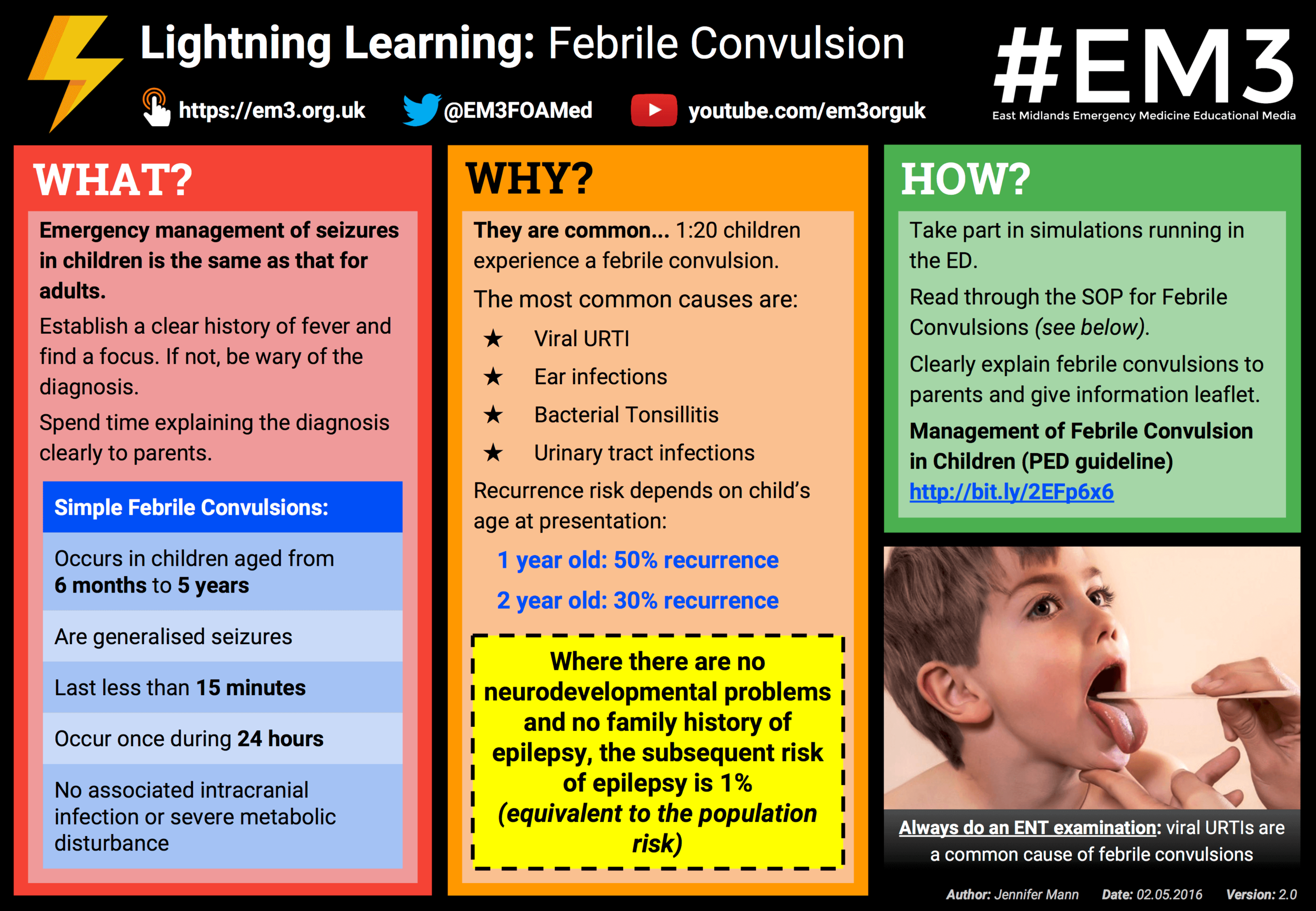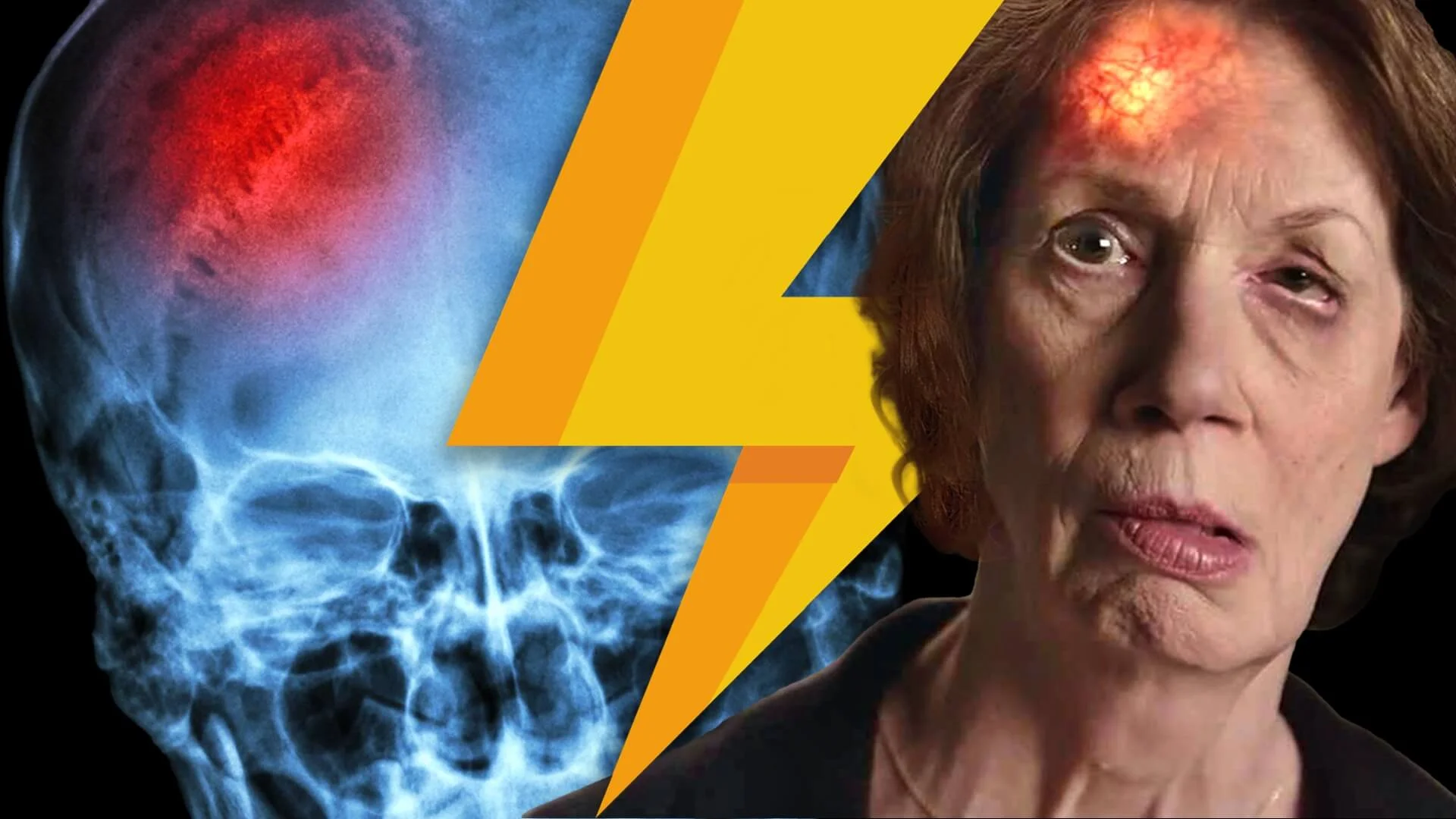Lightning Learning: Febrile Convulsion
“Febrile Convulsions are generalised seizures affecting 1 in 20 children between the ages of 6 months and 5 years.”
What?
Emergency management of seizures in children is the same as that for adults. Establish a clear history of fever and find a focus. If not, be wary of the diagnosis. Spend time explaining the diagnosis clearly to parents.
Simple Febrile Convulsions:
Occurs in children aged from 6 months to 5 years.
Are generalised seizures
Last less than 15 minutes
Occur once during 24 hours
No associated intracranial infection or severe metabolic disturbance
Why?
They are common – 1:20 children experience a febrile convulsion.
The most common causes are:
Viral URTI
Ear infections
Bacterial Tonsillitis
Urinary tract infections
Recurrence risk depends on child’s age at presentation:
1 year old: 50% recurrence
2 year old: 30% recurrence
Where there are no neurodevelopmental problems and no family history of epilepsy, the subsequent risk of epilepsy is 1% (equivalent to the population risk).
How?
Always do an ENT examination. Viral URTIs are a common cause of febrile convulsions.
Read through the SOP for Febrile Convulsions (see below).
Clearly explain febrile convulsions to parents and give information leaflet.
Take part in simulations running in the ED.
Further Reading
- Local Guideline (UHL): Management of Febrile Convulsion in Children







